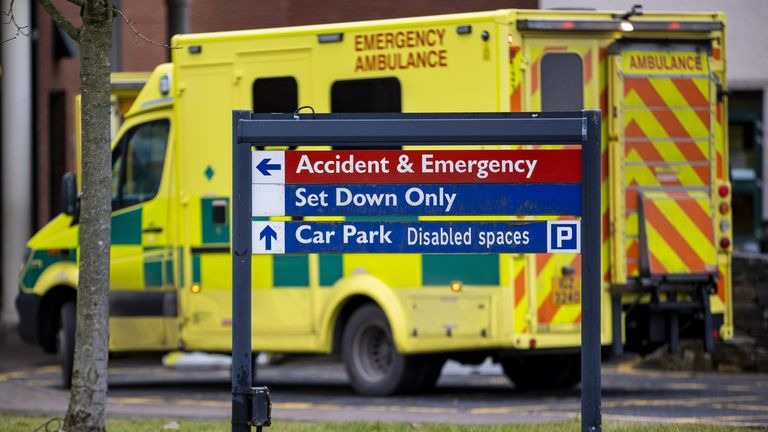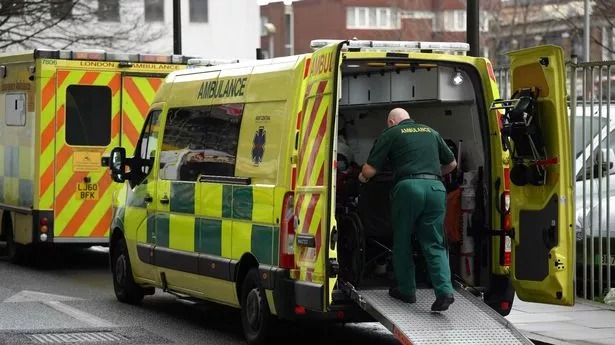Sunak’s unmet goals create NHS winter crisis

Sunak’s unmet goals create NHS winter crisis.
The NHS is on the brink of another winter crisis as Rishi Sunak fails to meet critical targets set in January for enhancing emergency care, leading to increased treatment delays for patients during the busiest months, as revealed by The Observer.
Official data indicates that key metrics such as waiting times for emergency care, ambulance response durations, the creation of new beds, and bed occupancy levels are significantly falling short of the expectations outlined in Sunak’s plan.
Dr. Adrian Boyle, President of the Royal College of Emergency Medicine, commented on Saturday night, stating that it is evident that the government’s explicit commitments less than a year ago to achieve the “largest and fastest” improvement in emergency response times before this winter will not be fulfilled.
“They are clearly not achieving what they set out to do,” Boyle remarked. “The consequence of this is that we will witness the same scenes of ambulances awaiting emergency department access, with patients receiving care in corridors. Last year was dreadful, and this year shows only a marginal improvement, far from where we need to be and far from the anticipated position.
“It is very disappointing because it is an utterly predictable and largely preventable problem. It is not a surprise that winter arrives every year.”
Prof. Philip Banfield, Chair of the British Medical Association Council, added, “As we approach what we know will be another incredibly difficult winter, colleagues are not feeling any more optimistic or prepared than last year – rather the opposite. We are still short of beds, have significant rota gaps, and patients are not getting the care they need or deserve.
“The waiting list is still unfathomably long, cancer and emergency department performance targets are being missed, and ambulance handover delays are unacceptable. Meanwhile, demand and workload in general practice are unsustainable.”
On January 30 this year, Sunak made a high-profile announcement of a new “delivery plan,” positioning it as a strategy to avert another winter of turmoil in 2023-24. He asserted, “I think we will see – in fact, I know we will see – the largest and fastest-ever improvement in emergency waiting times in the NHS’s history.”
At the core of the plan were several commitments, including a pledge to add 5,000 more beds to NHS hospitals before the winter.
As of last week, with winter in full swing, NHS England reported that only 3,000 additional “core beds” were in place, although it asserted that more were on the way.
Another “crucial” element of the plan was a commitment to improve bed occupancy rates. However, the latest official figures indicate a record-high bed occupancy rate of 94.8% in England for November. This surpasses any previous month since the onset of the Covid-19 pandemic. The bed occupancy rates for prior years were 87.4% in November 2020, 92.8% in November 2021, and 94.4% in November 2022.
The executive summary of the Sunak plan expressed an aspiration to achieve a rate of at least 76% for patients admitted, transferred, or discharged within four hours by March 2024. However, official data reveals the current rate is 69.5%, a decline since last January and far from the target. NHS sources acknowledged that the 76% level, considered unambitious and contrasting with the officially accepted level of 95%, was unlikely to be reached by next March.
Another crucial objective was for ambulances to respond to serious category 2 cases, averaging within 30 minutes during 2023-4. The current average is 38 minutes. Although there has been some improvement, NHS sources acknowledge a slim likelihood of meeting the target by spring. The plan included a promise of 800 new ambulances, but NHS England has not disclosed how many have been delivered, acknowledging that many are merely replacements for those taken out of service.
Wes Streeting, Labour’s shadow health secretary, expressed, “I think it is outrageous that Rishi Sunak has broken his promises to the NHS and sent it naked into the winter. What we see now is the NHS sounding the alarm, facing what could be the worst winter crisis it has faced, where patients face unacceptable waits and poor quality care.”

Streeting continued, “We didn’t have an annual winter crisis when Labour was last in government because we delivered both the investment and reform needed. That is what is going to be needed again after the next general election. We have got to shift the centre of gravity of the NHS out of the hospital and into the community. That means not just training thousands more nurses but also doubling the number of district nurses qualifying so that people can receive care in their own homes.”
Health officials claim to have invested in more doctors and nurses, alongside increased diagnostic and surgical capacity. The waiting list for routine hospital appointments decreased in October to 7.71 million, compared to the record high of 7.77 million in September.
A spokesperson from the Department of Health and Social Care stated, “Our work delivered through the urgent and emergency care recovery plan is already reducing both A&E waits and ambulance response times compared with last year as we make progress towards our ambitious targets. We are on track to create an additional 5,000 permanently staffed hospital beds this winter and have met our target to deliver 10,000 virtual ward beds, allowing patients to recover from the comfort of familiar surroundings. We’re working to get 800 new ambulances on the road, and we recently provided £800 million to support capacity in the NHS and help patients get the care they need as quickly as possible this winter.”


